novel in a looooong time.
Viewing: Blog Posts Tagged with: Medical, Most Recent at Top [Help]
Results 26 - 50 of 59
Blog: Emilyreads (Login to Add to MyJacketFlap)
JacketFlap tags: great jacket, certain humiliation, fiction, young adult, haiku, book crush, loved it, medical, dirty parts, award bait, Add a tag
novel in a looooong time.
Blog: Emilyreads (Login to Add to MyJacketFlap)
JacketFlap tags: adult, nonfiction, haiku, medical, liked it, great jacket, certain humiliation, Add a tag
or worse, in sickness and in health,"
they meant it.
Blog: Emilyreads (Login to Add to MyJacketFlap)
JacketFlap tags: adult, nonfiction, haiku, medical, liked it, great jacket, Add a tag
fascinating look at our
inner Pollyannas.
Blog: Emilyreads (Login to Add to MyJacketFlap)
JacketFlap tags: young adult, adult, nonfiction, haiku, book crush, loved it, Harvard, medical, great jacket, technology can be evil, Add a tag
wish I'd been an engineer.
Rock on, smartypants.
Blog: Emilyreads (Login to Add to MyJacketFlap)
JacketFlap tags: Cybils, fiction, young adult, graphic novel, adult, haiku, medical, liked it, award bait, great jacket, Add a tag
of sons and fathers,
disappointing each other.
Blog: Emilyreads (Login to Add to MyJacketFlap)
JacketFlap tags: certain humiliation, great title, fiction, young adult, haiku, book crush, loved it, medical, dirty parts, award bait, hipster, great jacket, Add a tag

Hazel, I will buy
you a "F**k Cancer" kit from
Subversive Cross Stitch.
Blog: Emilyreads (Login to Add to MyJacketFlap)
JacketFlap tags: great jacket, excessive subtitles, adult, nonfiction, haiku, medical, liked it, mommy, Add a tag
Medical Memoir Addiction:
admit your problem.
Blog: Emilyreads (Login to Add to MyJacketFlap)
JacketFlap tags: nonfiction, haiku, Harvard, medical, liked it, great jacket, adult, Add a tag

Yes, I AM a sucker
for medical-school memoirs --
Blog: Emilyreads (Login to Add to MyJacketFlap)
JacketFlap tags: fiction, adult, haiku, book crush, medical, dirty parts, liked it, award bait, Add a tag
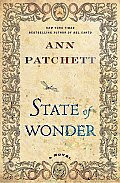
Rogue researcher sends
Marina into uncharted
territory.
Blog: Emilyreads (Login to Add to MyJacketFlap)
JacketFlap tags: great jacket, bathroom reading, technology can be evil, sloppy page design, excessive subtitles, adult, nonfiction, meh, Harvard, medical, Add a tag

Debunks "lizard brain"
idea, but not as clever
as he thinks he is.
Blog: Emilyreads (Login to Add to MyJacketFlap)
JacketFlap tags: adult, nonfiction, haiku, loved it, Harvard, medical, mommy, political, technology can be evil, perhaps I need to calm down, Add a tag
everybody loses. Now please
jab my kids more.
Blog: Emilyreads (Login to Add to MyJacketFlap)
JacketFlap tags: graphic novel, adult, nonfiction, haiku, medical, dirty parts, liked it, mommy, great jacket, certain humiliation, great title, Add a tag
memoir on love, anxiety,
and (not) babies.
Blog: Emilyreads (Login to Add to MyJacketFlap)
JacketFlap tags: work, adult, nonfiction, business, haiku, medical, liked it, great jacket, Add a tag
explains why we do dumb things
that we know are dumb.
Blog: Emilyreads (Login to Add to MyJacketFlap)
JacketFlap tags: medical, liked it, award bait, fiction, middle grade, haiku, Add a tag
of the senseless? Asperger's
story of grief, hope.
Blog: Monday Artday (Login to Add to MyJacketFlap)
JacketFlap tags: Pen and Ink, Medical, dt.haase, Add a tag

one-line pen and ink
It's been a while since I have posted but I thought this fit the last prompt.
More here: The Quotidian Journal
Blog: Sugar Frosted Goodness (Login to Add to MyJacketFlap)
JacketFlap tags: patient, illustration, science, metin seven, sevensheaven, medical, illustratie, doctors, voxels, 3d pixels, Add a tag
![]()
Illustration in a 3D pixel style, for an article named The Makeable Human, about the rise of electronic implants in medical science.
Sevensheaven images and prints are for sale at sevensheaven.nl
Blog: Emilyreads (Login to Add to MyJacketFlap)
JacketFlap tags: fiction, middle grade, haiku, medical, liked it, award bait, Add a tag

Unique topic makes
run-of-the-mill coming-of-age
worth checking out.
As Simple As It Seems by Sarah Weeks. Harper, 2010, 192 pages.
P.S. What does this jacket have to do with anything? She skips rocks like, once. The nightgown is good, but otherwise . . . ?
Blog: Monday Artday (Login to Add to MyJacketFlap)
JacketFlap tags: Medical, Jenny Kadis, Add a tag
This is an old piece about the medicalisation of childbirth - part of a larger digital installation for a digital arts festival. Seems to fit the current topic well! Other pieces from the exhibition can be seen at:
http://www.jennykadis.com/#/quantify-me/4540090195
http://www.jennykadis.blogspot.com/
Blog: Monday Artday (Login to Add to MyJacketFlap)
JacketFlap tags: HOO - ey, Medical, Add a tag
Blog: Monday Artday (Login to Add to MyJacketFlap)
JacketFlap tags: josh pincus, Medical, weekly challenge, Add a tag
 Mildred Ratched, the sadistic tyrant who maintained strict order as head administrative nurse at the Oregon State Mental Hospital, in Ken Kesey’s 1962 novel One Flew Over the Cuckoo’s Nest,was the bane of Randle McMuphy’s existence.
Mildred Ratched, the sadistic tyrant who maintained strict order as head administrative nurse at the Oregon State Mental Hospital, in Ken Kesey’s 1962 novel One Flew Over the Cuckoo’s Nest,was the bane of Randle McMuphy’s existence.Blog: Emilyreads (Login to Add to MyJacketFlap)
JacketFlap tags: adult, nonfiction, business, haiku, loved it, Churchy LaFemme, medical, award bait, been caught stealing, technology can be evil, Add a tag
best and very worst of
scientific progress.
Blog: Darcy Pattison's Revision Notes (Login to Add to MyJacketFlap)
JacketFlap tags: story, fiction, novel, ethics, culture, characters, medical, passion, issues, write, how to, Add a tag
Are there untouchable topics in literature? No, of course, not. But there are topics that are difficult to do well, or it feels like you are preaching.
You know the ones: alcoholism, abortion, medical ethics, underage drinking, etc. These are hard to put into a story or novel and have it work.
Dealing with Flash point, Difficult Topics
I’ve been listening to Mary E. Pearson’s novel, The Adoration of Jenna Fox and she does a stunning job of addressing medical ethics. It’s reminiscent of Peter Dickinson’s 1989 novel, Eva, but takes the discussion in new directions. Here are some of the things she does right as an author treading lightly.

Character. The novel works because the character is front and center. This is above all a character novel, with all the ethical dilemma from the medical “miracle” taking place within the character. She IS the ethical problem and has to resolve how she feels about herself. So, it’s not a theoretical issue; it’s an issue of identity.
Voice. Written in first person, the character’s voice is stunning. First person was a good choice, because it allows the reader to experience the dilemma along with the character. The voice never falters, it’s flawless.
Backstory. The bane of any sort of difficult topic is the mountain of data, the historical arguments, the cultural context. It is a trap, though, for the unwary author who tries to insert all this back story into the novel. Pearson walks that fine line between planting necessary information, but putting it in naturally.
All sides are presented fairly. Pearson populates the story with a variety of characters who represent the various points of view about this question of medical ethics. This is perhaps the hardest thing to do in a novel dealing with issues that set off fireworks in our culture. It’s easy to include stereotypes, believe cliches. Instead, Pearson creates fully developed characters who are passionate about issues, but are conflicted by the dilemma that confronts them. The grandmother, the friend at school, the mysterious next-door neighbor — each has a life perspective to bring to the story that enriches the conflict, without cheapening it.
Are you passionate about some topic facing our culture? I’d recommend you read this book just for pure enjoyment of Pearson’s language and storytelling. Then, re-read it, study it, as an example of how to do it right.
It’s sold movie rights: we can only hope they do the novel justice.
Also see the website for the book, Who is Jenna Fox?
Blog: Emilyreads (Login to Add to MyJacketFlap)
JacketFlap tags: adult, nonfiction, haiku, medical, liked it, great jacket, Add a tag
such a difference. Did you do
it right? Check this box.
Blog: Emilyreads (Login to Add to MyJacketFlap)
JacketFlap tags: adult, nonfiction, haiku, medical, liked it, great jacket, Add a tag
is it weird to be interviewing
your girlfriend?
Blog: OUPblog (Login to Add to MyJacketFlap)
JacketFlap tags: Health, History, Biography, A-Featured, Medical Mondays, asthma, Biographies of Disease, Mondays, Medical, of, biographies, Jackson, disease, Mark, Carlill v. Carbolic Smoke Ball Company, Mark Jackson, respiratory, inhalation, Add a tag

Mark Jackson is Professor of the History of Medicine and Director of the Centre for Medical History at the University of Exeter. His newest work, Asthma: The Biography, is a volume in our series Biographies of Disease which we will be looking at for the next few week (read previous posts in this series here). Each volume in the series tells the story of a disease in its historical and cultural context – the varying attitudes of society to its sufferers, the growing understanding of its causes, and the changing approaches to its treatment. In the excerpt below Jackson relays the story of Carlill v. Carbolic Smoke Ball Company.
On 7 December 1889, an American inventor, Frederick Augustus Roe, obtained a patent for a device that was designed both to cure and to prevent not only the deadly strain of influenza that was sweeping across Europe  from Russia, but also a wide range of other respiratory complaints, including catarrh, bronchitis, coughs and colds, croup, whooping cough, hay fever and asthma. Sold from offices in Hanover Square in London for ten shillings, the Carbolic Smoke Ball comprised a hollow ball of India rubber containing carbolic acid powder. When the ball was compressed, a cloud of particles was forced through a fine muslin or silk diaphragm to be inhaled by the consumer. Boosted by testimonials from satisfied customers and endorsements from prominent doctors, Roe was sufficiently confident that the contraption would prevent influenza that, in several advertisements placed in the Illustrated London News and the Paul Mall Gazette during the winter of 1891, he offered to pay £100 to any person who contracted influenza ‘after having used the ball 3 times daily for two weeks according to the printed descriptions supplied with each ball’. As if to demonstrate the sincerity of his offer, Roe claimed to have deposited £1,000 with the Alliance Bank in Regent Street.
from Russia, but also a wide range of other respiratory complaints, including catarrh, bronchitis, coughs and colds, croup, whooping cough, hay fever and asthma. Sold from offices in Hanover Square in London for ten shillings, the Carbolic Smoke Ball comprised a hollow ball of India rubber containing carbolic acid powder. When the ball was compressed, a cloud of particles was forced through a fine muslin or silk diaphragm to be inhaled by the consumer. Boosted by testimonials from satisfied customers and endorsements from prominent doctors, Roe was sufficiently confident that the contraption would prevent influenza that, in several advertisements placed in the Illustrated London News and the Paul Mall Gazette during the winter of 1891, he offered to pay £100 to any person who contracted influenza ‘after having used the ball 3 times daily for two weeks according to the printed descriptions supplied with each ball’. As if to demonstrate the sincerity of his offer, Roe claimed to have deposited £1,000 with the Alliance Bank in Regent Street.
In November 1891, Louisa Elizabeth Carlill, the wife of a lawyer, purchased a Carbolic Smoke Ball in London and carefully followed the instructions for use. When Mrs Carlill contracted influenza the following January, her husband wrote to Roe claiming the ‘reward’ offered in the advertisements. Suggesting that the claim was fraudulent, Roe refused to pay and provided Mr Carlill with the names of his solicitors. In the resulting legal case, initially heard in the court of Queen’s Bench and subsequently reviewed by Appeal Court, the dispute did not revolve primarily around whether the plaintiff had used the device correctly or indeed whether or not she had contacted influenza; these issues were accepted largely as fact. Rather, legal arguments focused on whether the advertisement constituted a valid offer, rather than ‘a mere puff’, as Lord Justice Bowen neatly put it, and whether Mrs Carlill’s use of the smoke ball constituted acceptance of that offer. By deciding unanimously in Mrs Carlill’s favour, the English courts set a precedent regarding unilateral contracts that continued to inform the legal doctrines of offer and acceptance, consideration, misrepresentation, and wagering throughout the twentieth century.
While Carlill v. Carbolic Smoke Ball Company became a celebrated moment in legal history, it al
View Next 8 Posts



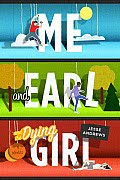

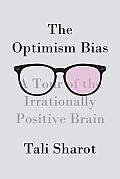

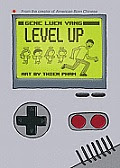


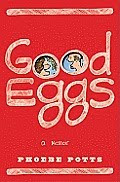
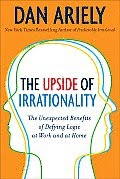
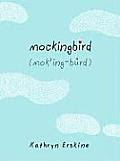




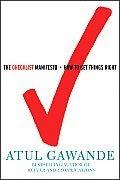
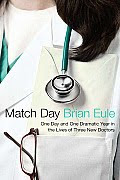
LOVED this book on so many levels!!